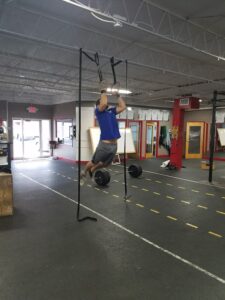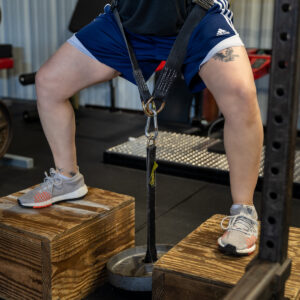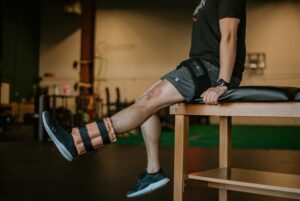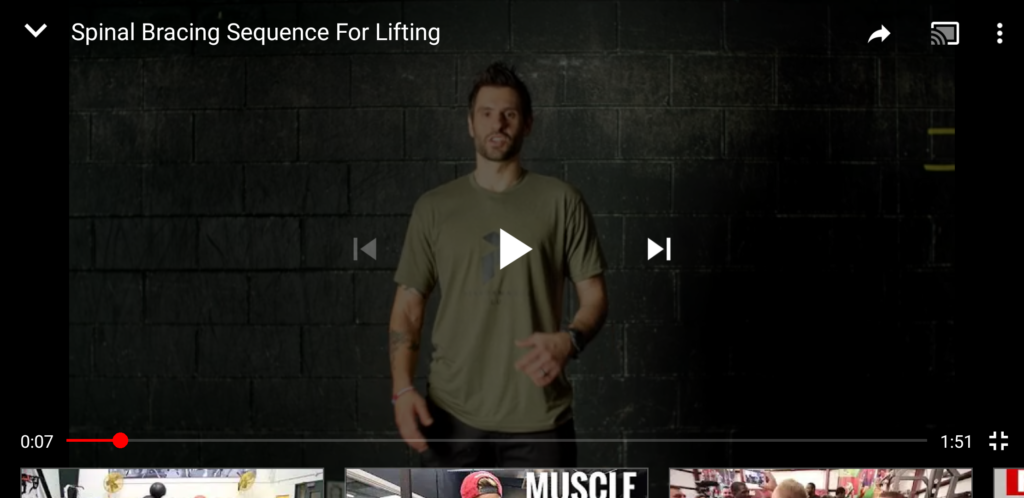Key Points
- If you workout hard tweaks and minor injuries are inevitable
- You should not stop training if you are injured
- You should use the 6 strategies below to modify your training if you are injured
- Don’t lose hope if you are injured. You will heal and you will get back to where you are now.
If you train hard, you are going to get some tweaks. Sore lower backs and strained muscle tissues are inevitable. Usually, these tweaks are nothing to worry about, and you should continue working out like normal. Eventually, though, we are all confronted with something more significant than a tweak. It can be tendinopathy, bursitis, sprained ankle, or even a torn ligament or herniated disc.
These injuries can take weeks and months to heal fully and often make you feel like you will lose all the gains you spent months and years earning.
The GOOD NEWS if you are injured is that you NEED to continue training to maintain your tissue fitness and help your body stay strong against other injuries. While it can seem complicated to continue training through an injury, using these six strategies and doing some minor changes in your training plan can keep you training without exacerbating tissue healing timelines.
6 Ways To Keep Training Through An Injury

#1. Limit Range Of Motion
Many muscle and tendon injuries happen when the muscle is under tension in a stretched position (i.e., bottom of a kipping pull-up). So an easy way to continue training without slowing the healing process is limiting the muscle’s range of motion. A great example is using a box to restrict depth on a squat if someone has patella tendonitis.

#2. Minor Variations To The Movement
Changing the movement variation is a great way to allow training while not slowing the healing process. For example, if you have shoulder pain in the front of your shoulder at the bottom of a pull-up, switching to a ring pull-ups from a bar can be the fix. That slight change from a fixed hand position to the freedom of rings will often allow people to keep doing pull-ups without further risking injury to the shoulder.

#3. De-load The Injured Tissue
Got a back injury that gets worse with squatting? Guess who your two new best friends are: The Sled & The Belt Squat. In this example, the disc between the spine is irritated by the barbell’s compressive load or the discs’ torque (maybe from the butt wink we talked about last week). By removing the load from the spine, you can still train your legs heavy and hard without further pissing off that poor little disc.

#4. Continue To Train The Opposite Side
If you just had surgery on your shoulder to fix a separated AC Joint, it would be dumb to start lifting again before the Orthopedic surgeon clears you. The freshly fixed tissue will not tolerate the load, and you will be back to square one. The scientific literature shows that training the opposite side of the body will still help keep strength in the injured side. Yes, it’s lame to do one-armed snatches while all your friends are using both, but it will help you in the long run.

#5. Lighten The Weights
In the case of most “itis” based muscle/tendon issues, you need to avoid lifting heavy. The damaged collagen can’t tolerate the intensity of the big weights. I did not say you shouldn’t lift weights. You need to go very light and progressively build back to your heavy load. The template below is a great way to accomplish this.
- 1st Week: 3×25 @ 30%
- 2nd Week: 3×20 @ 40%
- 3rd Week: 3×15 @ 50%
- 4th Week: 5×10 @ 60%
- 5th Week: 5×8 @ 70%
- 6th Week: 5×5 @ 80%

#6. Blood Flow Restriction Training
BFR is a new training/rehab method. A cuff is applied on an extremity, and you lift with 20% of your 1RM using a very specific protocol of sets, reps, and rest. During blood flow restriction training, limited oxygen to the muscle means that the slow-twitch, Type I muscle fibers aren’t very active as they require oxygen fuel. Instead, the bigger, faster Type II muscle fibers are recruited. The byproduct is growth hormone secretion levels jack up to 170% higher than traditional strength training. Growth hormone increases collagen synthesis. Meaning you are getting new tissue to grow without loading it heavy enough to damage it.
If you want to use BFR, consult with a professional before just getting a cuff of amazon and doing 5000 bicep curls. Cutting your circulation off is dangerous when done wrong.
The moral of the story is that an injury is not a reason to stop training. You just need to be creative to continue getting better while you are healing.



